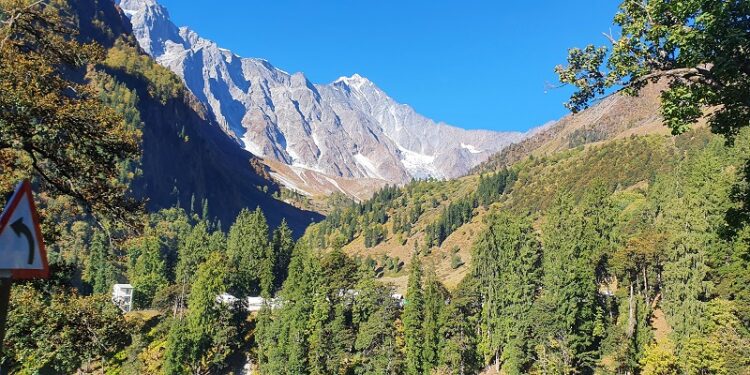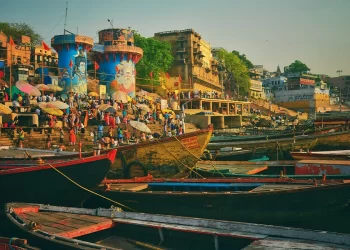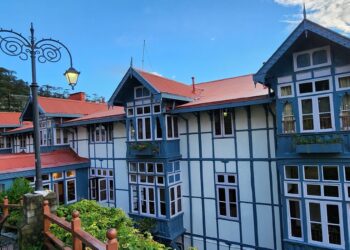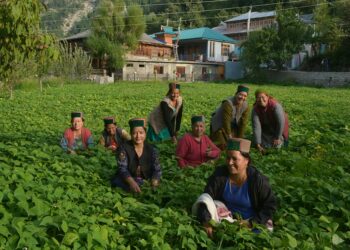By Devika Sood
Wellness with its different dimensions is becoming the buzz word for the world we are currently residing in. Be it mental well-being or immunity which we all strive to achieve or at least introduce into our lives. As each day unfolds in these unprecedented times, all we want is a healthy body and mind. Across the world, people are focusing on prevention, self-actualisation, and mindfulness into their daily lives.
The dominant view of wellness is that it is holistic and that an absence of illness and a state of well-being are both essential (World Health Organization, 1986). It is not a surprise that people now expect to continue their healthy lifestyles and wellness routines when they plan a holiday or business trip.
The travel with the quest for wellness is termed as Wellness Tourism. The origin of wellness tourism goes back to the first group of people who discovered fresh mountain air and the healing hot springs cured what ailed them.
Wellness tourism is defined by the US-based non-profit Global Wellness Institute (GWI) as “travel associated with the pursuit of maintaining or enhancing one’s well-being”. Wellness tourism today is much more than the destination or activities – it is an extension of the values and lifestyle of the traveller.

Research has brought about figures showing the exponential growth of Wellness tourism. From 2015 to 2017, the wellness tourism market grew from $563bn to $639bn, or 6.5% annually – more than twice as fast as the growth of tourism overall, according to GWI. By 2022, GWI predicts the market will reach a whopping $919bn – representing 18% of all global tourism – with well over a billion individual wellness trips to take place around the globe.
Thus, this segment of tourism with its new requirements needs to be catered effectively. So much being debated and discussed on the future of travel in webinars across the screens by experts, academicians and stakeholders, each submission ends with the hope that travel will bounce back as it is an innate trait of human beings and it’s in our DNA.
IN THE ERA OF HEALTH-CONSCIOUS LIFESTYLES, WELLNESS DESTINATIONS ARE POISED TO BECOME A GLOBAL DEVELOPMENT
Among the various facets which will play a vital role in the revival of tourism would be the quest for the well-being of the self, family, or employees. Wellness has long been a part of the travel experience, but it has just recently been trending and this trend is here to stay.
In this new era of health-conscious lifestyles, wellness destinations are poised to become a global development.
It is imperative to underline the difference between “Medical tourism” and “Wellness tourism.”
Both differ significantly in their objectives and so does the clientele. Medical tourists travel abroad to receive more affordable or higher quality medical treatment in comparison to their home country.
On the other hand, those travelling for wellness seek activities that maintain or enhance their physical, mental, and spiritual well-being, happiness, and productivity.
In the case of wellness tourism, the motivators are unique location-based experiences. Wellness is deep-rooted with eating the right food and being away from the hustle and bustle of the city.
Ultimately, be it a holiday at a wellness retreat, eating organic, digital detox, or having an active holiday, all falls in the category of wellness tourism. City folks leading an inactive and sedentary lifestyle often plan to travel to the lap of nature seeking rejuvenation and relaxation to withstand the negative effects of a morbid lifestyle.

For the stakeholders to capitalize on prevailing market opportunities, it is imperative to understand. Wellness tourists are categorised as primary and secondary. Be it leisure or business traveller, ambitious organizations will incorporate wellness vacations as a component of their work environment wellness packages.
Wellness travel specifically assists members with developing connections, giving occasions to communication while lessening business-related exhaustion and stress. Also, wellness travel assists people with building and building cautious ways of life and globally conscious attitude which have sweeping advantages to well-being, imagination, and critical thinking limit.
Wellness travel programs being offered by more organizations as a motivator to inspire people and groups to arrive at execution objectives.
The broad category of wellness tourists can be put down as:
a) Primary wellness tourists: Those whose sole purpose of travel and choice of destination is wellness.
b) Secondary wellness tourists: Those who seek to maintain wellness or participate in likewise activities while on any sorts of trips. It typically includes business or leisure travellers seeking relaxing accommodation, rejuvenation, fitness activities, outdoor adventure, health-conscious culinary, yoga and mindfulness practices.
Himachal Pradesh has ample options for the discerning traveller. Marketing by targeting the niche segment willing to travel for wellness has a great potential to be explored. Several luxury resorts are strewn around the state with stunning landscape and fresh climate throughout the year.
Camping, trekking, hiking, rappelling, rock climbing, hot water spring, river rafting, paragliding, mountain biking, zorbing are myriads of adventure activities that can be indulged in. Surreal and magical places like Lahaul valley and other destinations like Dalhousie (also called Mini Switzerland), Dharamshala (residence of Dalai Lama), and the most visited summer capital of British India, Shimla. The list is a mile long.
Iron out the wrinkles and completely de-stress in delightful and quiet environmental factors which will leave you at absolute peace. Himachal is an ideal destination to rejuvenate and relax.

Founded in 2016, The Traveller Trails is a print and digital magazine and a trusted source for current news, trends, analysis, opinions, interesting blogs, videos and exclusive interviews from every corner of the world.












